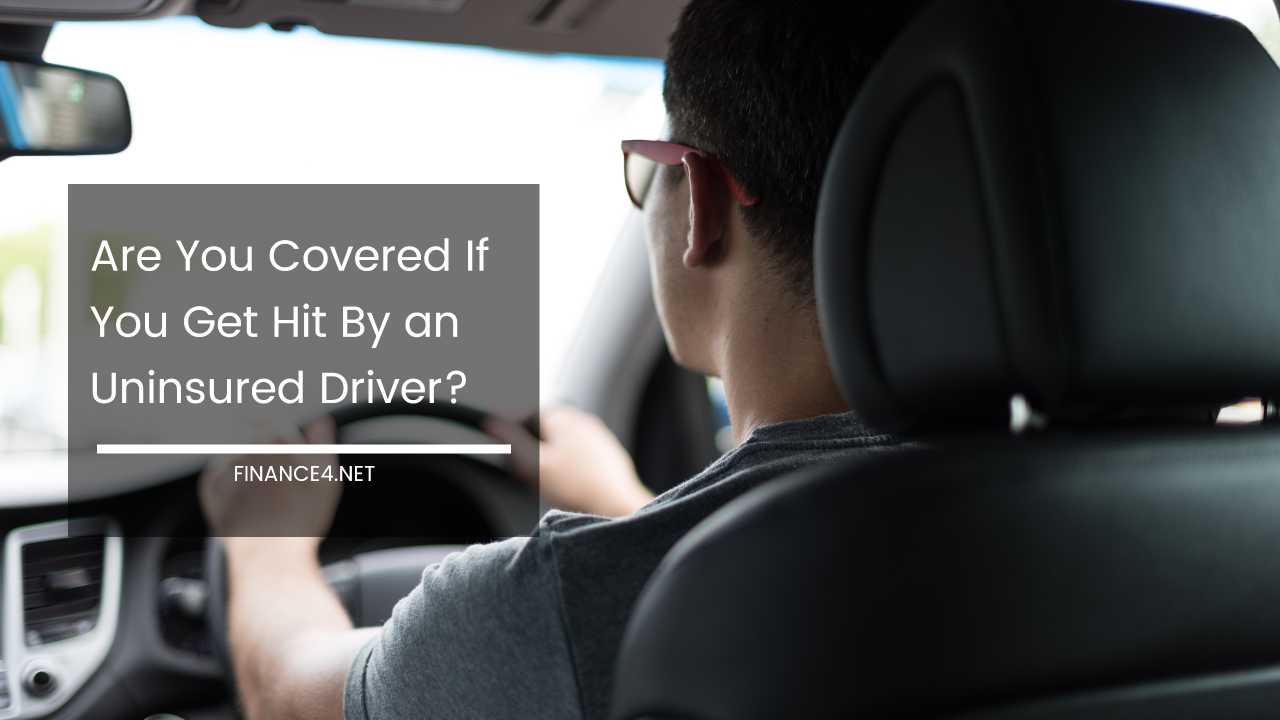Are You Covered if You Get Hit by an Uninsured Driver?

Don’t Get Blindsided: A Comprehensive Guide to Uninsured and Underinsured Motorist Coverage
Imagine a sunny afternoon drive, windows down, music playing. Suddenly, a car veers into your lane, causing a collision.
The impact jolts you, and as you assess the situation, dread sets in – the other driver doesn’t have insurance. Now what? Medical bills, car repairs – how will you handle these unexpected costs?
The unfortunate reality is that millions of drivers on the road lack liability insurance. According to the Insurance Research Council, one in eight drivers in the U.S. are uninsured [1]. This means encountering an uninsured motorist is a significant possibility. However, there’s no need to panic.
This guide delves into the world of car insurance coverage, specifically focusing on how to protect yourself financially in the event of an accident with an uninsured or underinsured driver.
Beyond Liability: Understanding Uninsured and Underinsured Motorist Coverage
While liability insurance is mandatory in most states, it only protects you if you cause an accident. What happens if the other driver is at fault and lacks insurance? This is where uninsured motorist (UM) and underinsured motorist (UIM) coverage come to the rescue.
Uninsured Motorist (UM) Coverage: Think of UM coverage as your shield against uninsured drivers. It steps in when the at-fault driver has no liability insurance and can cover:
- Property Damage (UMPD): This pays for repairs to your car if it’s damaged in an accident caused by an uninsured motorist. It functions similarly to collision coverage, but specifically applies to uninsured drivers.
- Bodily Injury (UMBI): This is a lifesaver if you or your passengers are injured in an accident caused by an uninsured driver. It covers medical expenses like hospital bills, doctor fees, rehabilitation costs, and even lost wages due to the accident.
Underinsured Motorist (UIM) Coverage: This acts as a safety net when the at-fault driver has liability insurance, but the limits of their policy aren’t enough to cover all your accident-related expenses. UIM coverage pays the difference between the at-fault driver’s policy limits and your own UIM coverage limits.
Imagine this scenario: You sustain serious injuries in an accident, and the at-fault driver only has minimum liability coverage of $25,000 per person. Your medical bills total a staggering $100,000. In this situation, UIM coverage (if you have it) would pay the remaining $75,000, lessening the financial burden considerably.
Important Note: UM and UIM coverage are typically add-ons to your existing car insurance policy. Be sure to discuss these coverages with your insurance provider and choose limits that adequately reflect your potential needs. Don’t underestimate the value of discussing this with an agent – a few extra dollars a month on your premium could translate to significant financial protection down the line.
Beyond UM/UIM: A Look at Other Insurance Options
While UM and UIM are crucial for uninsured/underinsured motorist situations, let’s explore other types of car insurance that play a role:
-
Collision Coverage: This covers repairs to your car regardless of who caused the accident. While not directly related to uninsured drivers, it can be helpful if the at-fault driver is unknown or uninsured. However, collision coverage typically comes with a deductible, which is the amount you’ll need to pay out of pocket before your insurance kicks in.
-
Comprehensive Coverage: This covers damage to your car caused by events other than collisions, such as theft, fire, vandalism, or animal collisions. It won’t be of assistance in situations involving uninsured drivers.
-
Personal Injury Protection (PIP): This is mandatory car insurance in some states and optional in others. PIP is a form of no-fault insurance, meaning it pays for medical expenses for you and your passengers regardless of who caused the accident. While helpful, PIP coverage typically has limitations on the amount it pays and may not cover all your accident-related expenses.
Taking Action After an Accident with an Uninsured Driver
Insurance plays a vital role, but there are additional steps you can take if you find yourself in an accident with an uninsured driver:
-
File a Police Report: This document is critical for any insurance claim and serves as legal documentation of the accident. Don’t hesitate to call the police, even if the damage appears minor.
-
Gather Evidence: Take photos of the damage to your car, the scene of the accident, and any injuries you sustained. The more visual evidence you have, the stronger your case will be. Additionally, collect witness statements if possible. Their accounts can be invaluable when filing a claim.
-
Contact Your Insurance Company: As soon as possible after the accident, notify your insurance company and follow their claim filing procedures. The sooner you initiate the claim process, the smoother things will go in the long run.
- Consider Legal Action: Depending on the severity of the accident and the financial burden it places on you, suing the at-fault driver might be an option. However, legal battles can be lengthy and expensive. Consult with an attorney to determine if this course of action is right for you. They can assess the situation, advise you on your legal options, and represent you in court if necessary.
Mitigating the Risk: Proactive Steps to Stay Protected
While insurance coverage provides a safety net, there are proactive steps you can take to minimize your chances of encountering an uninsured motorist:
-
Conduct Vehicle History Checks: Before purchasing a car from a private seller, consider running a vehicle history check. This report will reveal information about the car’s insurance status, which can give you peace of mind.
-
Verify Insurance During Private Sales: If you’re selling your car privately, ensure the buyer has valid insurance before handing over the keys. This will protect you from any liability if they cause an accident before transferring ownership.
-
Check Minimum Liability Requirements in Your State: While liability insurance is mandatory in most states, the minimum required coverage can vary. Research the minimum liability limits in your state and consider purchasing higher limits for additional protection. Remember, the minimums are just that – minimums. They may not be enough to cover the costs of a serious accident.
-
Park Smartly: Whenever possible, avoid parking your car in high-risk areas with a high volume of traffic or a reputation for uninsured drivers.
The Importance of Open Communication with Your Insurance Agent
Throughout this guide, we’ve emphasized the importance of discussing your car insurance coverage with your agent. An open and honest conversation is key to ensuring you have the right protection in place. Here are some key questions to ask your agent:
- What are the different levels of UM/UIM coverage available?
- How much UM/UIM coverage do I need?
- What are the policy limits for UMPD and UMBI?
- How much will adding UM/UIM coverage increase my premium?
By understanding your options and tailoring your coverage to your specific needs and risk factors, you can ensure you have the financial security you need in case of an accident with an uninsured or underinsured driver.
Remember, Peace of Mind is Priceless
Car accidents are stressful and disruptive events. Don’t let the financial burden of dealing with an uninsured driver add to your worries.
By understanding the different types of car insurance coverage available and taking proactive steps to minimize risk, you can ensure you and your loved ones are protected on the road.
Remember, a few extra dollars spent on UM/UIM coverage now could save you a significant amount of money and heartache down the line. So, don’t get blindsided – take control and ensure you have the peace of mind you deserve.
Additional Resources:
- Insurance Research Council: https://www.insurance-research.org/
- National Association of Insurance Commissioners: https://content.naic.org/
- Insurance Information Institute: https://www.iii.org/index.html



